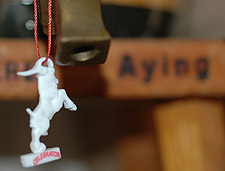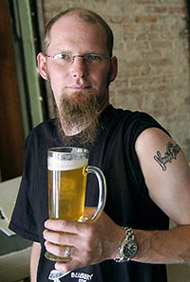 Fall is in the air. The mornings are crisper, roll down your window as you pass the Fruit Basket on Fourth Street and you can smell green chiles roasting, RVs are already parked around Balloon Fiesta Park . . . and the Men’s Journal fourth annual guide to “The World’s Best Beers” is out.
Fall is in the air. The mornings are crisper, roll down your window as you pass the Fruit Basket on Fourth Street and you can smell green chiles roasting, RVs are already parked around Balloon Fiesta Park . . . and the Men’s Journal fourth annual guide to “The World’s Best Beers” is out.
All I have to say, well not all, is that the Germans and Czechs will not be pleased.
I rambled on long enough last year about “best” lists so I won’t repeat myself.
Once again you start with 25 really good beers, then get a bonus of 25 “Best Beers for Every Occasion” (with one repeated from the first list). This is meant to be fun page, with the best beer “For an All-Nighter” (North Coast Red Seal) and best “For a One-Nighter” (Ayinger Celebrator). Memo to Men’s Journal: That’s not a horse dangling from the neck of Celebrator, but a goat.
To their credit, many of the beers listed in previous years are here again (nice to know the best can still be the best). Not to their credit: They explain “How we did it,” as if we are to believe this proves that Deschutes Mirror Pond is really the third best Pale Ale, not the 1st, 9th and 103rd.
So that you too will feel compelled to spend $4.95 to buy the magazine and learn “How Carbs Are Killing You” I’m not revealing everything. Just that they picked a top five in five different categories (listed with their first choice):
Best Pale Ale – Firestone Walker Pale Ale. No. 4 Dogfish Head 60 Minute IPA is called “America’s best India pale ale.” Them’s fightin’ words.
Best Stout or Porter – Deschutes The Abyss. They must feel a Bell’s [fill in the blank] Stout is a must. Expedition got bumped for the lower abv Kalamazoo to make room for two other Imperials.
Best Belgian – Saison Dupont. That’s really Belgian-style because Ommegang Three Philosophers and Russian River Damnation are both on the list.
Best Wheat – Aventinus Doppel Weizen-Bock. Looks like they are running for office and out to please every voting group. We get a weizenbock, two traditional weiss beers (though one is from Pennsylvania), a Belgian-style white (from Maine) and an American wheat.
Best Lager or Pilsner – Lagunitas Pils, followed by four more American beers. Oh, how the mighty have fallen.
Overall this list doesn’t contain as many pleasant surprises as last year, but I’m going tear the pages out of the magazine and keep them with me for when I’m in a pub (like to toast Michael Jackson on Sept. 30). Arguing the merits of the list will make for great conversation. Maybe we’ll start by trying to find a European lager worthy of it.
 Can he walk the walk?
Can he walk the walk? Fall is in the air. The mornings are crisper, roll down your window as you pass the Fruit Basket on Fourth Street and you can smell green chiles roasting, RVs are already parked around Balloon Fiesta Park . . . and the Men’s Journal fourth annual guide to “The World’s Best Beers” is out.
Fall is in the air. The mornings are crisper, roll down your window as you pass the Fruit Basket on Fourth Street and you can smell green chiles roasting, RVs are already parked around Balloon Fiesta Park . . . and the Men’s Journal fourth annual guide to “The World’s Best Beers” is out. Captain Hops of
Captain Hops of